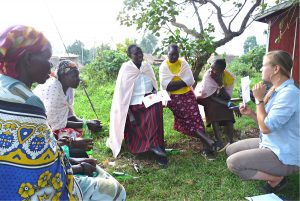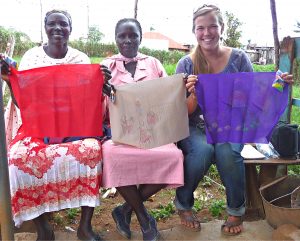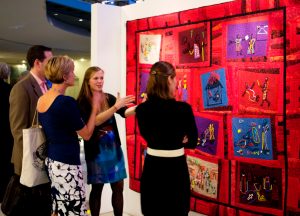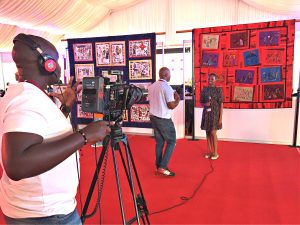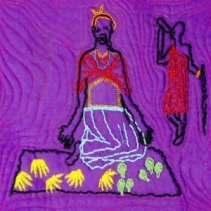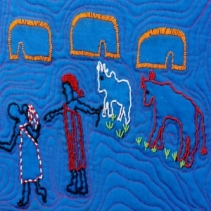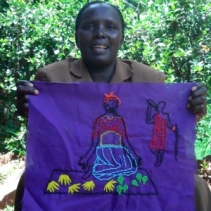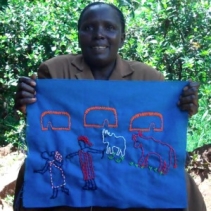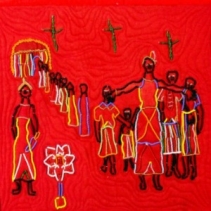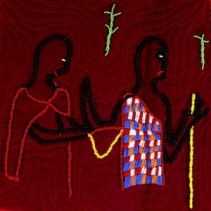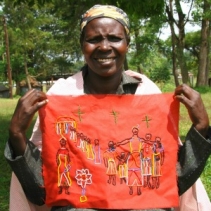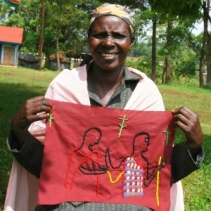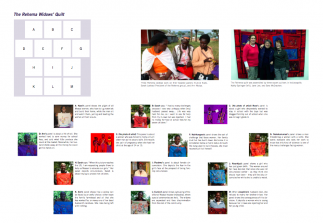The Maasai Rehema Widows Quilt
Background
Background
|
AP has partnered with the Kakenya Centre for Excellence in western Kenya to produce the Rehema Widows Quilt, featured on this page, and the Maasai Girls Quilt. These spectacular two quilts are made with beads and a scarlet backing, in the Maasai tradition. The quilting began in the summer of 2011. Peace Preparations: Fellow Charlotte Bourdillon had been working at Enoosaen for most of the year. In the summer, she was joined by Cleia Noia. The original idea had been to work with girls from the school, but Kakenya’s mother (“Mama Kakenya”) suggested that working with widows as well would give a more rounded picture of the life of women and girls. She introduced them to some of her friends, known as the Rehema group. (Rehema means “compassion” in Swahili). The two Fellows used their computers to bring up photos of other advocacy quilts from Bosnia and the DRC, and explained the concept of advocacy quilting. They then invited the women to tell their own story through embroidery. The women responded enthusiastically. Mama Kakenya is a committed foe of genital cutting as are all of the Rehema widows, so it was perhaps not surprising that they chose to depict what they had gone through. Several of their designs are not for the squeamish. Like other Peace Fellows who have supervised the making of quilts, Charlotte and Celia were thoroughly absorbed by the whole process and by the communal nature of the sewing. Cleia described the process in a blog, Stories Worth Telling. They began by asking the women to describe their experience and what they wanted to design. They then asked two local artists to help sketch out the initial designs, but found them uninterested so Charlotte put pencil to cloth and mapped out some rough designs. Cleia continued: “We later distributed these drawings to the women, and gave them all the material (beads in different colors, strings, and needles) necessary to start the beading. They are very excited about the project, and some are almost done with their first panels. After seeing the work done by their fellow group members, other women who were not initially participating are now eager to join our project, and Charlotte has already collected new stories to draw.” Charlotte returned to the United States with both sets of blocks to begin the process of assembling the two quilts. She approached her mother’s quilting guild in Indianapolis. Four quilters – Charlotte’s mother Sarah, Jane Lee, Cathy Banks, and Kathleen Springer (photo) – agreed to participate. The quilters worked together by phone and email to make their designs as compatible as possible. The Rehema quilt was shown publicly for the first time at the United Nations on March 8, 2012, where it was presented by Charlotte and Kathy Springer. The quilt then traveled to Kean University. The Rehema quilt has since been shown at scores of exhibitions around the world and remains one of the most admired advocacy quilts – known for the graphic designs, the fine bead work, and the rich colors and texture of the quilt itself. The quilt returned to Kenya in November 2019 where it was shown and much admired at the ICPD25 summit on women and girls, attended by hundreds of advocates. |
Artists and blocks
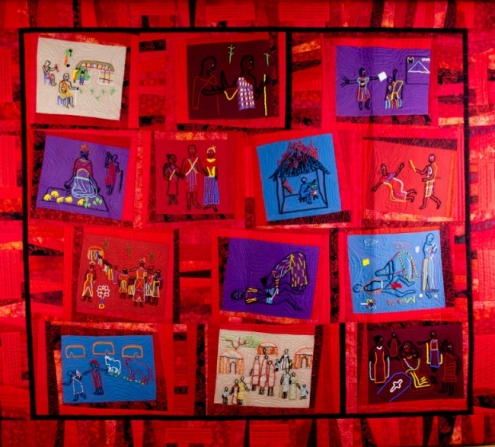 |
|
Naori Naori’s picture shows the plight of all Maasai women, having to lug materials and build their home, while the men sit and watch them, yelling and beating the women at their leisure. |
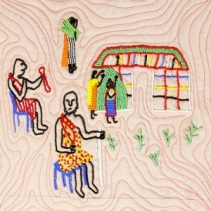 |
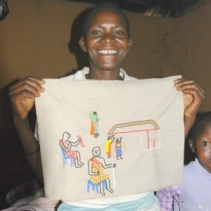 |
|
Ann Ann’s panel is about how she spent her life working very hard to earn money for her children’s school fees, selling what little Ann’s second panel shows how, if she is not forced to remarry one of her dead husband’s relatives, a widow will be forced to leave the family farmstead and all that she has worked for. She is left with nothing. |
|
|
|
Anonymous This panel is about a woman who was forced to marry a much older man as his second wife, and she recalls the pain of having been pregnant and already with one child at age 14 or 15. Artist photo unavailable. |
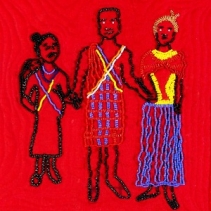 |
|
|
Sarah Sarah says, “I had so many challenges because I was very unhappy when [my] husband passed away… life was very hard for me, so I went to ask for help from my in-laws but was rejected. I had no money for food or school fees for my 7 children.” |
|
|
|
Nairikungera Nairikungera’s panel shows another struggle women face: her family’s mud hut burns down, and since it is considered below a man’s status to touch the dung used to rebuild it, she must reconstruct it all herself. |
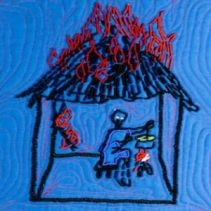 |
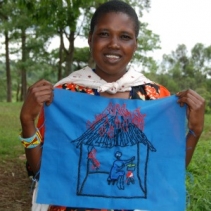 |
|
Parakwo Parakwo’s panel is very explicit. It shows the fear in the girl’s face as she is circumcised. |
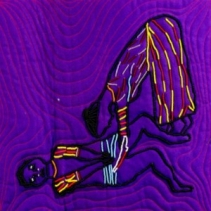 |
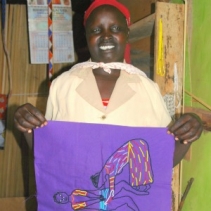 |
|
Eunice Eunice’s panel shows a grouping of traditional Maasai houses, or manyatta, where special ceremonies are held. The widows are forced to stay separated from the rest and face discrimination from the rest of the community. |
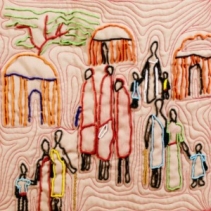 |
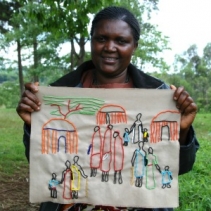 |
|
Rose Rose’s (photo unavailable) panel is about a girl who desperately wanted to stay in school with the boys but was dragged forcibly out of school when she was to begin grade 4. |
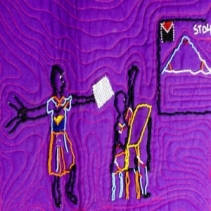 |
|
|
Nairekumurran Nairekumurran’s panel shows a man threatening a woman with a knife. She says that she wants all who see it to know that this kind of violence is one of many challenges that women face. |
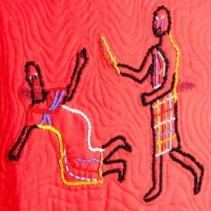 |
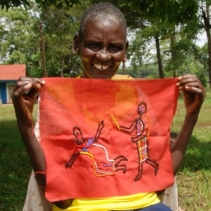 |
|
Noonkipa Noonkipa’s panel depicts a girl who has just given birth. The women around her have decided that since she was not circumcised before as they think she should be, they will forcibly circumcise her while she is unable to resist. |
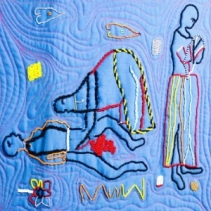 |
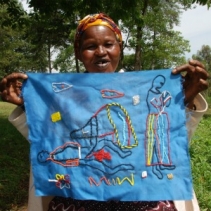 |
|
Josephine When Josephine’s husband died, she refused to marry her brother-in-law. Her panel shows the consequences of this decision: a woman is crying because her in-laws are rejecting her and her young child. |
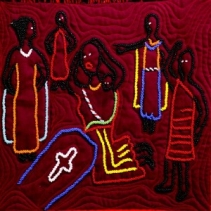 |
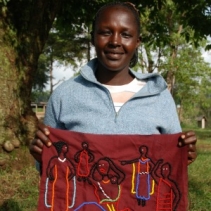 |

